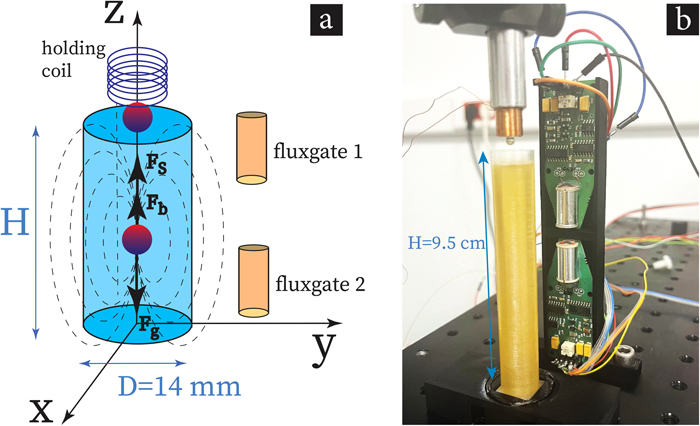Magnetic Viscometer
Inspired by an undergraduate mechanics experiment on the measurement of viscosity of fluids, and taking advantage of their know-how on magnetic measurements, two undergraduate students of the Physics Department, Christoforos Patramanis-Thalassinakis and Panagiotis Karavelas, together with the group leader of the Laboratory for Quantum Physics and Quantum Biology Iannis Kominis, developed a new viscometer with a strong commercialization potential.
The viscometry market stands around $0.5b, since such instruments are useful in a number of industries, like oil/petroleum, cosmetics, paints, and biotech. In the viscometers used in the undergraduate labs, which also exist as products in the market, a metallic sphere falls from rest in the fluid under the action of gravity, buoyancy and friction. The latter depends on the viscosity. By measuring the terminal velocity of the sphere under force equilibrium, the viscosity can be extracted.
In the new viscometer the metallic sphere is replaced by a magnetic sphere, and instead of using a ruler and a clock to measure terminal velocity, two fluxgate magnetometers are used to record the changing magnetic field produced by the magnetic sphere at the position of the sensors. Fitting the theory to the data the viscosity can be extracted, currently with precision of 3%.
The first advantage of the method is that it provides a number of data points during the whole trajectory of the sphere (thus the sphere does not need to reach terminal velocity). Since there are many data points instead of one number (the terminal velocity), viscosity can be precisely extracted from the data. The consequence is that only a small fluid volume is required, currently 15 mL, with design underway to reach 1 mL.
The second advantage related to commercialization is that this viscometer is quite cheap, with materials cost less than $200. It is thus poised to address a market/product gap in the price range between $500 and $3500, providing competitive specifications.
The scientific article was published at Journal of Applied Physics, and was chosen by the Editors as “featured” article. Among the featured articles it was then chosen for the journal’s cover. A non-technical highlight also appeared at Kudos Publishing Showcase of American Institute of Physics.
The research was cofinanced by the European Union and Greek national funds through the Operational Program Crete 2020-2024, under the call ``Partnerships of Companies with Institutions for Research and Transfer of Knowledge in the Thematic Priorities of RIS3Crete", with project title ``Analyzing urban dynamics through monitoring the city magnetic environment'' (project KPHP1 - 0029067).
Scientific Publication: Journal of Applied Physics 134, 164701 (2023)
Popular Summary: AIP Publishing Showcase





